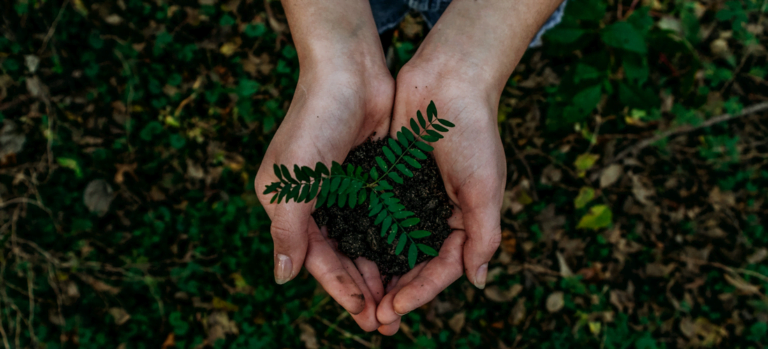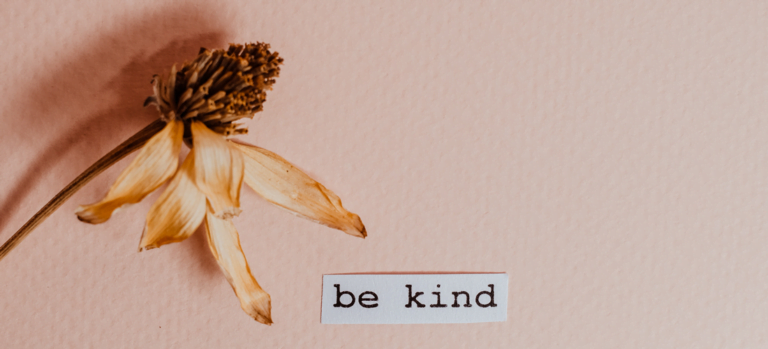Cultivating patience can have profound effects on our lives. It promotes understanding, empathy, and resilience, strengthening our relationships and enabling us to overcome adversity. Patience can also reduce stress levels and boost overall mental health, making the journey of personal growth more fulfilling and less overwhelming. By practicing patience, we can navigate life’s ups and downs more calmly and thoughtfully, leading to better decision-making and a more harmonious life.
Patience, often referred to as the art of ‘waiting,’ is a powerful virtue that plays a pivotal role in personal and professional growth. It is the ability to tolerate delays, obstacles, or annoyances without getting agitated or anxious. Patience is not simply the ability to wait – it’s how we behave while we’re waiting. This virtue is an indispensable part of the journey towards becoming a more balanced, calm, and resilient individual.
Strategies for Cultivating Patience
Strategy 1: Practicing Mindfulness
Mindfulness is a form of meditation where you focus your full attention on the present moment. This involves observing your thoughts and feelings without judgment. Rather than dwelling on the past or anticipating the future, mindfulness encourages living in the present and accepting it without any urge to change or escape it. It’s about letting things be and paying attention to your immediate experience, be it a sound, sensation, or emotion.
Implementing mindfulness can significantly aid in cultivating patience. Being mindful allows us to pause before reacting to a situation, giving us the opportunity to respond in a more thoughtful and patient manner. It encourages us to accept the present situation, even if it involves a delay or inconvenience, thereby fostering patience. By focusing on the here and now, we become less preoccupied with the end result and more patient with the process. We learn to embrace the journey, with all its challenges and setbacks, and this acceptance, in turn, nurtures patience.
Strategy 2: Setting Realistic Expectations
Another effective strategy for cultivating patience involves setting realistic goals and expectations. It’s natural to aim high and push our limits, however, setting unattainable standards can lead to feelings of frustration and impatience when we fail to meet them. By adjusting our expectations and setting achievable goals, we can experience the satisfaction of accomplishment more frequently, which in turn fosters patience.
Setting smaller, manageable goals and gradually working our way towards a larger objective can enhance our patience. Each small success keeps us motivated and patient, as we understand that progress is being made, even if it’s not immediately noticeable. It is essential to remember that personal growth is a journey, not a race.
Being patient with ourselves and recognizing that lasting change takes time can go a long way in cultivating patience. It allows us to be kinder to ourselves during the process and to persevere even when challenges arise. Through realistic goal-setting, we can better manage our impatience, reduce our stress levels, and make the journey of personal growth a more enjoyable and patient one.
Examples of Unrealistic Expectations and their Impact on Patience
A common example of unrealistic expectations can be seen in the realm of physical fitness. Many people start a new fitness regimen with the expectation of attaining quick results. However, when they do not see a dramatic change in their physique or weight after a few weeks, impatience sets in. This impatience often leads to frustration and disappointment, causing them to abandon their fitness goals prematurely.
In the context of learning a new skill, such as playing a musical instrument or learning a foreign language, expecting to achieve proficiency in a short period is another example of unrealistic expectations. This mindset can lead to impatience and discouragement when individuals inevitably face the challenges that come with learning anything new. Instead of appreciating the progress they have made, they might focus solely on their shortcomings, thereby cultivating impatience rather than patience.
Guidance on Setting More Realistic Expectations
Setting more realistic expectations involves acknowledging and accepting that worthwhile pursuits take time and effort. When beginning a new fitness regimen, instead of focusing on rapid weight loss or muscle gain, set goals related to consistency, such as exercising a certain number of times per week.
When learning a new skill, celebrate small victories. For instance, being able to play a simple song on a new instrument or having a basic conversation in a new language is a significant step forward. Remember that proficiency comes with practice and time.
Moreover, it’s helpful to break down larger objectives into smaller, manageable goals. This approach allows for regular moments of achievement, which can encourage patience and maintain motivation over a longer period. Furthermore, being flexible with expectations and adjusting them as necessary can also aid in cultivating patience. Progress is rarely linear, and there will be ups and downs. Recognizing this fact can help manage impatience and make the journey towards personal growth more enjoyable and fruitful.
Strategy 3: Learning to Pause
Taking a step back in challenging situations offers several benefits that contribute to cultivating patience. It allows for a dynamic shift in perspective, enabling you to view the situation from different angles.
This broadened viewpoint can reveal previously unseen solutions or new pathways for progress. It also creates a breathing space, an opportunity for calm reflection instead of impulsive reactions. This pause can offer a much-needed mental rest, reducing feelings of stress and overwhelm, and fostering clarity of thought, thereby enhancing decision-making processes.
Stepping back can stimulate personal growth; it’s an act of self-care that acknowledges the importance of mental and emotional well-being in successfully navigating life’s challenges. With practice, this strategy can play a pivotal role in nurturing patience, enhancing resilience, and promoting a healthier, more balanced approach to personal development.
Techniques for Implementing a Pause Before Reacting
Implementing a pause before reacting is an effective way to cultivate patience and improve your emotional responses. One approach is the “count to ten” technique. When you find yourself in a stressful situation, take a deep breath and mentally count to ten. This short break can help to calm your mind and refocus your thoughts, allowing you to respond more thoughtfully and less impulsively.
Another technique is the “mindfulness pause”. This involves taking a moment to observe your thoughts and feelings without judgment. Recognizing your emotional state can give you a better understanding of your reactions and can help you to choose a more patient response.
Practicing meditation and deep breathing exercises can also be beneficial. These techniques train your mind to focus on the present moment and can help you to become more aware of your reactions. With regular practice, you’ll find it easier to pause and consider your responses in various situations.
Strategy 4: Practicing Empathy
Practicing empathy is another powerful strategy in cultivating patience. Empathy involves understanding and sharing the feelings of others, which, in turn, can help nurture patience in our interactions. When we empathize, we see the situation from the other person’s perspective, thereby reducing hasty judgments and impulsive reactions. This understanding can lead to more thoughtful responses, fostering patience.
Empathy helps build stronger, more meaningful relationships, as it encourages tolerance and understanding, core components of patience. It’s important to remember that everyone is fighting their own battles, and practicing empathy can significantly contribute to a more patient outlook on life.
Benefits of Understanding Others’ Perspectives
Understanding others’ perspectives holds immense benefits, especially in the context of cultivating patience. Firstly, it encourages open-mindedness and tolerance. When we strive to comprehend another person’s viewpoint, we broaden our own horizons and learn to accept diverse thoughts and opinions. This intellectual growth nurtures patience as it tempers quick judgments and brash reactions.
Secondly, it fosters effective communication. Understanding the perspective of others allows us to communicate more effectively and empathetically, thereby reducing misunderstandings and conflicts which could necessitate patience.
Lastly, understanding others’ perspectives enhances our emotional intelligence. It allows us to perceive and manage not just our emotions, but those of others as well. This heightened emotional intelligence can prevent hasty reactions and encourage more patient responses.
In essence, understanding others’ perspectives is a critical tool in our patience-building toolkit. By taking the time to consider thoughts and viewpoints other than our own, we cultivate a deeper sense of patience, tolerance, and empathy.
Exercises to Enhance Empathy Skills
There are several exercises that can help you enhance your empathy skills and, by extension, cultivate patience within yourself.
- Active Listening: This practice involves giving your full attention to the speaker, absorbing their words, and responding in a thoughtful way. It is about understanding the emotions behind the words and not just the words themselves. Practice active listening in daily conversations to develop your empathy skills.
- Perspective-Taking: Try to put yourself in someone else’s shoes. Imagine their feelings, thoughts, and reasons behind their actions. This helps you to better understand their perspective and develops your empathy.
- Non-Judgmental Observation: Practice observing people and situations without forming immediate judgments. Stay open-minded and try to understand the context before coming to conclusions. This exercise can enhance your empathy and patience.
- Mindful Meditation: Mindfulness helps you to become more aware of your own emotions and those of others. By understanding your emotions, you can better empathize with others, which in turn enhances your patience.
- Empathy Journaling: Keep a daily journal where you reflect on your interactions with others. Write about how they might have felt and why they might have acted as they did. This exercise helps to foster understanding and develop empathy.
By incorporating these exercises into your daily routine, you can strengthen your empathy skills and cultivate a deeper sense of patience.
Strategy 5: Developing Self-Compassion
Self-compassion is the cornerstone of cultivating patience. It involves acknowledging and accepting our own imperfections and mistakes without self-judgment or criticism. When we practice self-compassion, we give ourselves the same kindness and understanding that we would give to others, which aids in developing patience.
Patience is about tolerating discomfort or delay without becoming angry or upset, and having self-compassion makes us more tolerant towards our own shortcomings and errors. It encourages us to take a step back, reassess the situation, and approach it with a renewed sense of calm and patience. Therefore, developing self-compassion is an effective strategy in the journey of cultivating patience.
Self-compassion exercises and strategies
There are several exercises and strategies that can help in cultivating self-compassion:
- Mindful Self-Compassion Break: This tool involves consciously turning towards your pain or discomfort, acknowledging it, and offering comfort and kindness to yourself. You silently repeat phrases like ‘This is a moment of suffering’, ‘Suffering is a part of life’, ‘May I be kind to myself’, and ‘May I give myself the compassion I need’. This practice reminds us that suffering is a part of the human condition, and it encourages us to approach discomfort with kindness and understanding.
- Letter to Self: Writing a letter to yourself about a situation where you were hard on yourself or where you struggled can be a powerful exercise. Write about the situation without any judgment, as if you’re writing to a dear friend. Show understanding, kindness, and offer comfort. This practice helps us realize our common humanity and encourages self-kindness.
- Meditation: Guided meditations specifically designed for self-compassion can be an effective tool. These meditations generally involve focusing on an instance of suffering or self-criticism and then sending love, care, and comfort to oneself.
- Self-Compassion In Daily Life: Make a conscious effort to speak kindly to yourself in everyday life, especially during challenging situations. This could be as simple as telling yourself “It’s okay, everyone makes mistakes” when you err, or “I did my best, and that’s enough” when you feel like you’ve fallen short.
By incorporating these exercises into your routine, you can cultivate self-compassion, which is a crucial element in developing patience. Through self-compassion, we learn to treat ourselves with understanding and kindness, helping us to react with patience in frustrating situations.
Strategy 6: Cultivating Gratitude
Gratitude is a powerful emotion that can significantly impact our levels of patience. When we cultivate a consistent practice of gratitude, we shift our focus from what’s wrong or lacking in our lives to the abundance that already exists. This reframing of our personal narrative fosters an environment of acceptance and contentment that indirectly nurtures patience.
When we’re grateful, we’re less likely to be frustrated by life’s minor inconveniences and more likely to have the patience to deal with challenging situations. We become more tolerant of the time it takes for things to unfold or for goals to be achieved, acknowledging that good things often require time.
To develop this attitude of gratitude, consider maintaining a gratitude journal where you note down three things you’re thankful for each day. By consciously cultivating gratitude, we can develop greater patience with ourselves, with others, and with the natural progression of life.
Fostering a Gratitude Mindset
Developing a gratitude mindset isn’t achieved overnight; it’s a gradual process that requires continuous effort. However, the rewards of this mindset are innumerable. Here are some practical tips to foster a gratitude mindset:
- Reflect on the positive: Instead of focusing on the negatives, pause, and think about the positives that happened during your day. This simple shift can change your perspective and make you more thankful.
- Affirmations: Start your day with positive affirmations. Speak aloud the things that you are grateful for. This simple habit can set the tone for your day.
- Gratitude letters: Write letters to people you’re thankful for. This not only boosts your feelings of gratitude but can also brighten someone else’s day.
- Mindfulness: Practice mindfulness. When you’re present in the moment, you’re more likely to notice and appreciate the blessings around you.
- Volunteer: Give back to your community. Volunteering can help you realize the positive impact you can make, fostering a sense of gratitude in return.
Remember, cultivating gratitude takes time and practice. But with continuous effort, you’ll find that your patience grows along with your ability to see and appreciate the abundance in your life.
Strategy 7: Practicing Deep Breathing and Relaxation Techniques
Deep breathing and relaxation techniques play a pivotal role in cultivating patience as they directly impact our physiological responses to stress and impatience. When we are impatient, our body typically goes into a state of tension and our breathing becomes shallow and rapid. Regular practice of deep breathing exercises, however, can disrupt this cycle.
By consciously taking slow, deep breaths, we signal our brain to calm down and relax. This helps to lower our heart rate and blood pressure, reducing feelings of anxiety and impatience. Moreover, deep breathing stimulates the release of endorphins, our body’s natural feel-good hormones, which promote a sense of peace and well-being.
Relaxation techniques, such as progressive muscle relaxation or guided imagery, complement deep breathing by helping to further alleviate bodily tension. As we relax our muscles or visualize calming scenes, we encourage our mind to shift away from impatient thoughts.
Over time, with consistent practice, these techniques can help us to respond to stressful or frustrating situations with greater patience and calm. Like cultivating gratitude, learning to breathe deeply and relax is not an overnight process, but the rewards for your patience and peace of mind are definitely worth the effort.
Strategy 8: Seeking Support and Accountability
A strong support system is an essential element when it comes to cultivating patience. Having those around you who understand your journey, offer encouragement, provide perspective, and hold you accountable can make a significant difference in your personal growth.
These could be family members, friends, mentors, or even professionals such as life coaches or therapists. A support system serves as a safety net, catching you when you are on the verge of losing patience and helping you bounce back with renewed determination. They are your cheerleaders, celebrating your victories, no matter how small, and reminding you of your progress when you feel impatient with yourself.
In seeking support and accountability, you are not only bolstered by the strength of others but also learn to extend the same patience to them, thus fostering a cycle of patience and understanding.
Strategy 9: Journaling and Self-Reflection
Journaling can be an incredibly effective tool in cultivating patience. It serves as a personal space for self-reflection and exploration, where you can openly express your thoughts, feelings, struggles, and triumphs in cultivating patience. By documenting your experiences, you create a tangible record of your journey.
You can see where you started, observe the progress you’ve made, and gain insights into patterns or triggers that disrupt your patience. Moreover, the act of writing itself can be therapeutic and calming, allowing you to slow down and engage in the moment, a fundamental aspect of patience. When you look back over your journal entries, you can appreciate your growth, which reinforces your commitment to cultivating patience and provides motivation to continue this practice.
The reflective nature of journaling serves not just as a record of your journey, but also as a mirror showing you the path forward, constantly reminding you that the process of cultivating patience is a journey, not a destination.
Strategy 10: Embracing Patience as a Journey
Emphasizing the importance of embracing patience as a continual journey, it’s crucial to understand that the road is likely to be marked with inevitable setbacks and challenges. Life is unpredictable, and even the most patient individuals encounter situations that test their resolve.
These challenging moments are not failures or deviations from your path; instead, they are an integral part of the journey. Each setback, each moment of impatience, is an opportunity for learning and growth. Indeed, it’s through overcoming these hurdles that you truly cultivate patience.
Patience is not about never feeling impatient or frustrated—it’s about how you respond to these feelings. Navigating these challenges with grace and resilience reinforces your commitment to cultivating patience, reminding you that this is not a destination to be reached, but a lifelong journey to be experienced.
Common Misconceptions About Patience
Many people mistakenly equate patience with inactivity or passivity, assuming that patient individuals simply do nothing and wait for things to happen. This is far from the truth. Patience is not about idle waiting, but about active engagement and understanding the timing of actions. It involves making conscious decisions about when to act and when to wait, when to push and when to pull back.
Another common misconception is that patience signifies weakness or lack of ambition. On the contrary, patience is a sign of strength and self-control. It requires the courage to resist immediate gratification and the foresight to understand the potential benefits of waiting.
Lastly, some people believe that patience is innate — that you’re either born with it or not. However, patience can be cultivated and nurtured through practice, much like any other skill. It’s not a fixed trait but a capacity that we all have the potential to develop.
In debunking these misconceptions, we realize that patience is a dynamic, proactive, and learnable skill that plays a critical role in personal growth and resilience.
Conclusion
Cultivating patience is an integral part of personal growth and well-being. It serves as the backbone of resilience and the catalyst for successful self-improvement and happiness. More than just a virtue, patience is a life skill that shapes our daily interactions and influences our long-term success. It empowers us to navigate life’s challenges with grace and wisdom, enriches our relationships, and promotes emotional and psychological health. Investing time and effort in nurturing our capacity for patience is not just a personal commitment but a stepping stone to a more fulfilling, balanced, and meaningful life.










